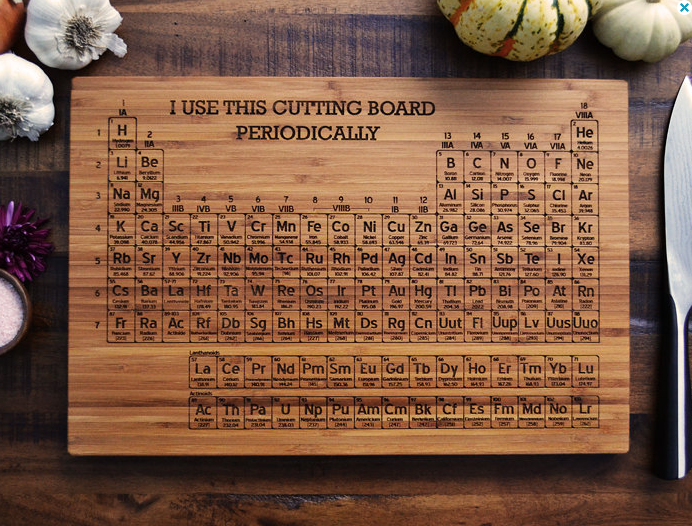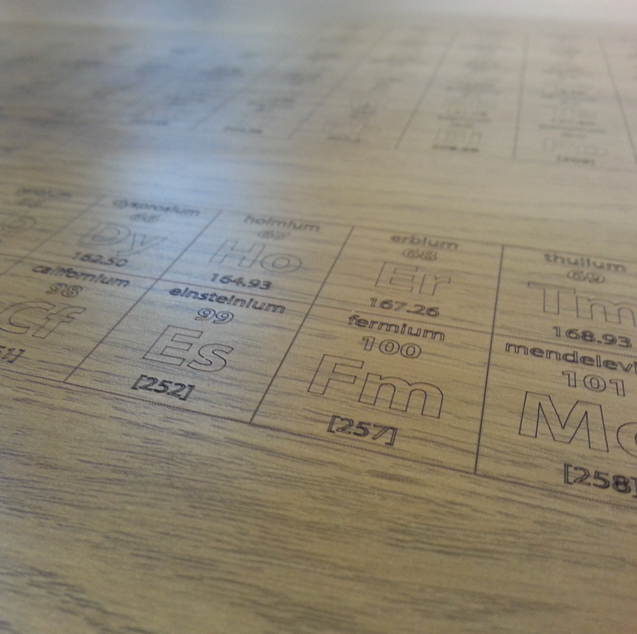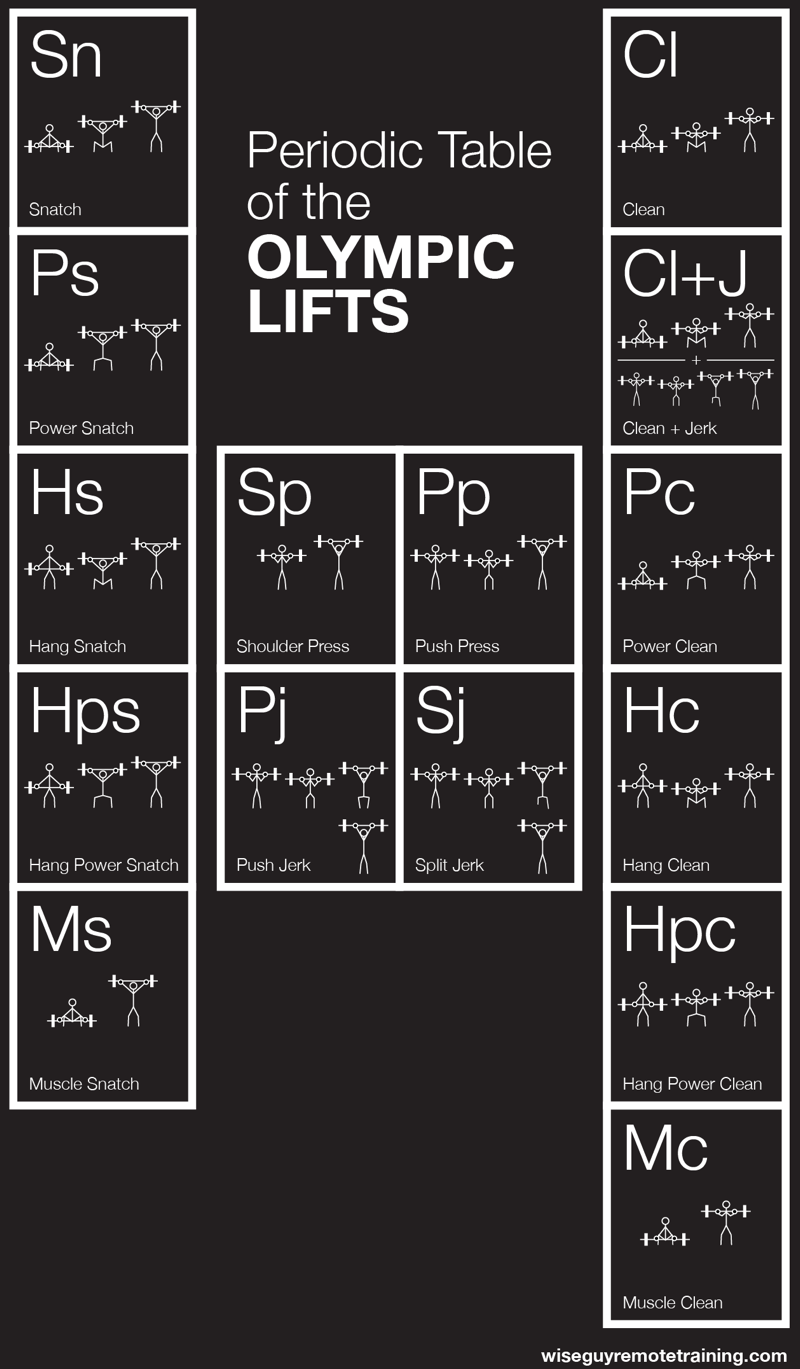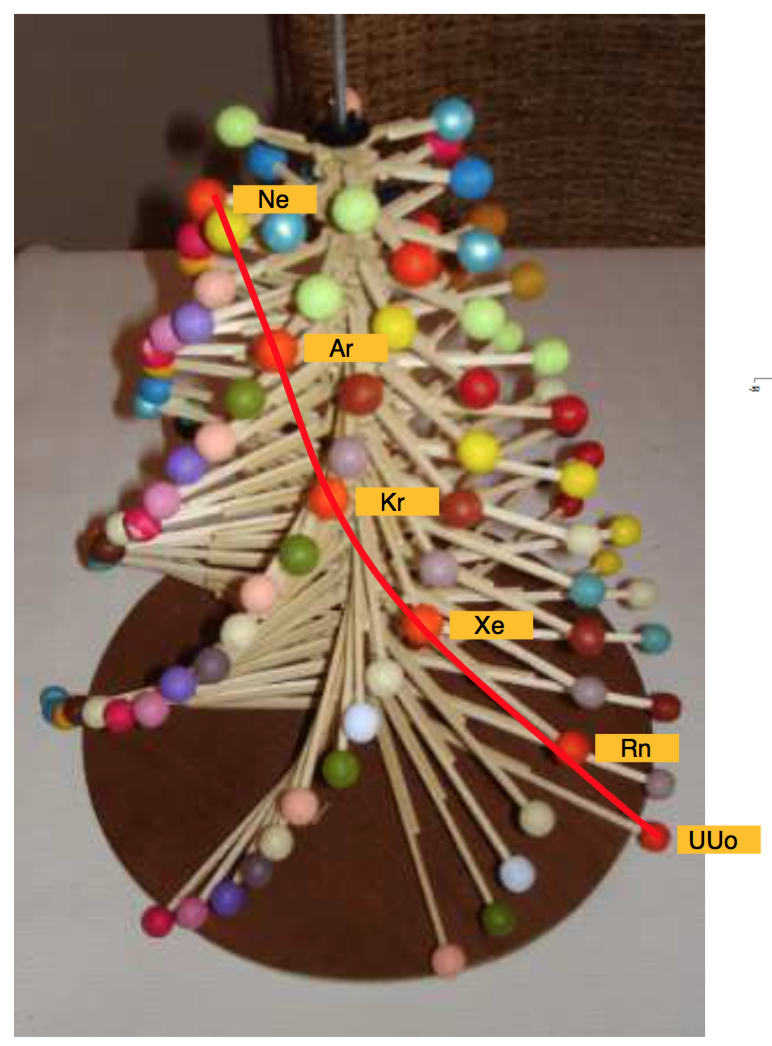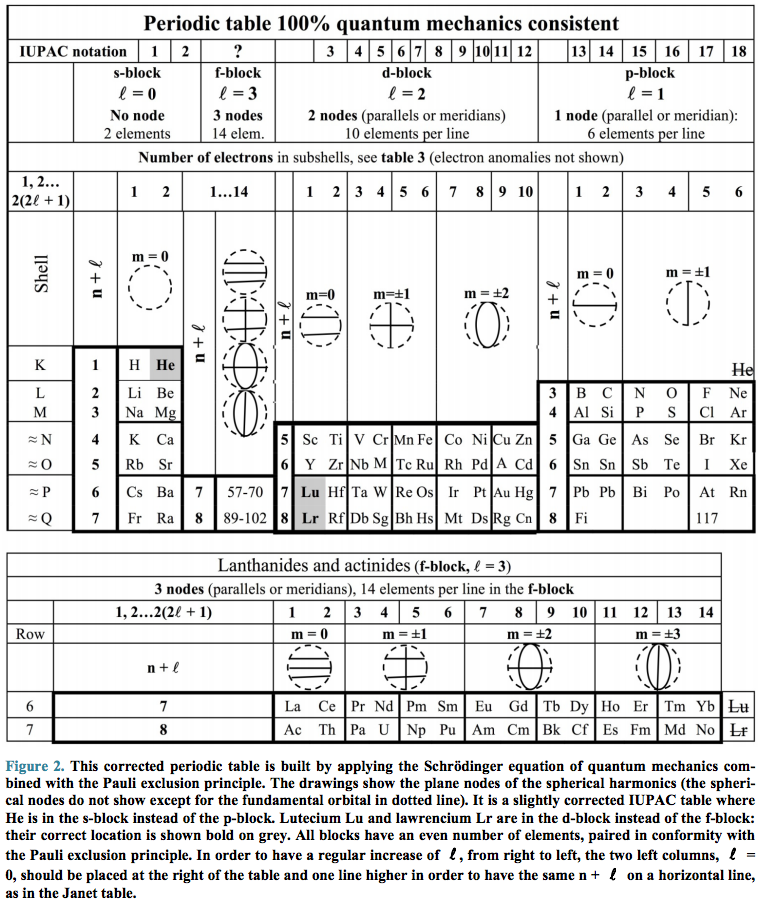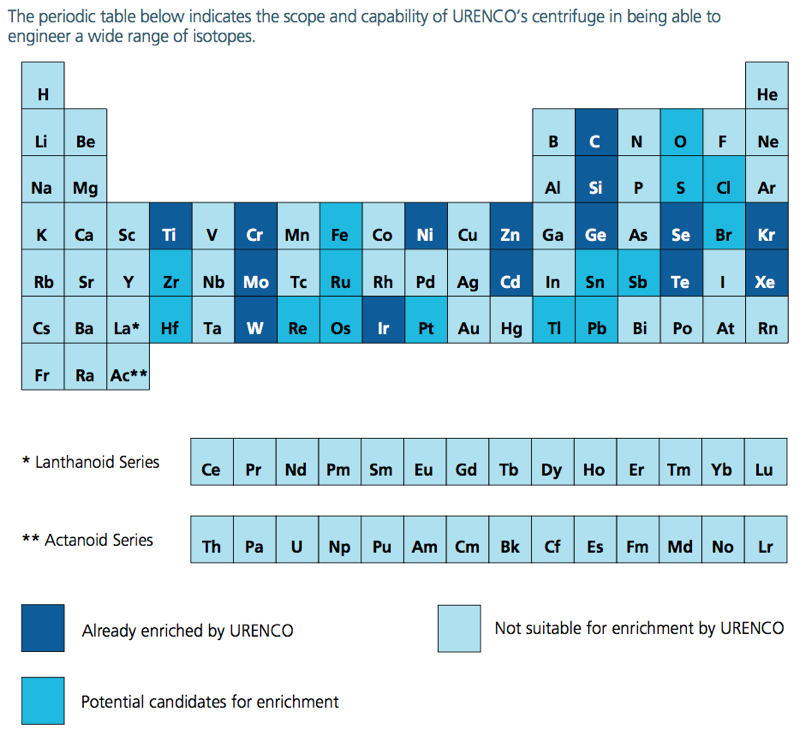Periodic Table |
 |
 |
 |
 |
 |
 |
 |
| What is the Periodic Table Showing? | Periodicity |
The INTERNET Database of Periodic Tables
There are thousands of periodic tables in web space, but this is the only comprehensive database of periodic tables & periodic system formulations. If you know of an interesting periodic table that is missing, please contact the database curator: Mark R. Leach Ph.D.
Use the drop menus below to search & select from the more than 1300 Period Tables in the database:
- SEARCH:
- By Decade
- By Type
-
Pre-Selected
Best Four Periodic Tables for Data All Periodic Tables by Name All Periodic Tables by Date All Periodic Tables by Reverse Date All Periodic Tables, as Added to the Database All Periodic Tables, reverse as Added Elements by Name Elements by Date Discovered Search for: Mendeleev/Mendeléeff Search for: Janet/Left-Step Search for: Eric Scerri Search for: Mark Leach Search for: René Vernon Search for: Electronegativity
-
By Year
2025 2024 2023 2022 2021 2020 2019 2018 2017 2016 2015 2014 2013 2012 2011 2010 2009 2008 2007 2006 2005 2004 2003 2002 2001 2000 1999 1998 1997 1996 1995 1994 1993 1992 1991 1990 1989 1988 1987 1986 1985 1984 1983 1982 1981 1980 1979 1978 1977 1976 1975 1974 1973 1972 1971 1970 1969 1968 1967 1966 1965 1964 1963 1962 1961 1960 1959 1958 1957 1956 1955 1954 1953 1952 1951 1950 1949 1948 1947 1946 1945 1944 1943 1942 1941 1940 1939 1938 1937 1936 1935 1934 1933 1932 1931 1930 1929 1928 1927 1926 1925 1924 1923 1922 1921 1920 1919 1918 1917 1916 1915 1914 1913 1912 1911 1910 1909 1908 1907 1906 1905 1904 1903 1902 1901 1900 1899 1898 1897 1896 1895 1894 1893 1892 1891 1890 1889 1888 1887 1886 1885 1884 1883 1882 1881 1880 1879 1878 1877 1876 1875 1874 1873 1872 1871 1870 1869 1868 1867 1866 1865 1864 1863 1862 1861 1860 1859 1858 1857 1856 1855 1854 1853 1852 1851 1850 1844 1843 1842 1838 1836 1831 1830 1829 1825 1824 1817 1814 1813 1811 1808 1807 1804 1803 1802 1801 1800 1798 1794 1791 1789 1787 1783 1782 1781 1778 1775 1774 1772 1771 1766 1753 1751 1748 1735 1718 1700 1690 1687 1682 1671 1669 1624 1617 1520 1000 -300 -450 -800 -1000 -2000 -3500 -3750 -5000 -6000 -7000 -9000
Periodic Tables from the year 2014:
| Year: 2014 | PT id = 631, Type = non-chem |
Beatles, Periodic Table of
A periodic table of the Beatles, from dotmund:
Thanks to Eric Scerri for the tip!
See the website EricScerri.com and Eric's Twitter Feed.
| Year: 2014 | PT id = 633, Type = misc |
Table of Organic Chemicals and Their Smells
A table of organic chemicals and their smells:
Thanks to Marcus Lynch for the tip!
| Year: 2014 | PT id = 635, Type = misc data |
Correspondences Between The Classical Thomson Problem and The Periodic Table of The Elements
By Tim (TJ) LaFave, a very detailed pdf discussing the correspondences between the classical Thomson Problem and the Periodic Table of the Elements. You will need to click thru and zoom in:
| Year: 2014 | PT id = 636, Type = formulation |
Lado's Periodic Table Series Analysis
By Solomon F Lado, a mathematical analysis.
Abstract (full paper):
"There is a periodic table, at least in terms of atomic number and electronic configuration, for every positive integer, c >= 2, with a capacity of 20c2 – 21c + 1 elements, where c is the construction index, and c equals one plus the maximum number of electrons per orbital of an atom. The c-construction index and the c-construction-index formulae are unique to this report. The maximum number of potential orbitals per sub-shell of an atom = 3n-1 where n is the index of the s, p, d, and f sub-shells":

| Year: 2014 | PT id = 637, Type = misc |
Winter Olympics Opening Ceremony Periodic Table
From the 2014 Winter Olympics Opening ceremony, a Russian periodic table. See the whole video on RuTube.
Thanks to Eric Scerri for the tip!
See the website EricScerri.com and Eric's Twitter Feed.
| Year: 2014 | PT id = 638, Type = formulation |
Jodogne's Janet New Color Periodic Table
By J.C. Jodogne, "a Janet type slightly modified to enhance shells, periods and to make determination of ground state configuration (orbitals) very easily to build". Click here to get the full size pdf.

| Year: 2014 | PT id = 639, Type = formulation |
Jodogne's New Color Table
By J.C. Jodogne, "a medium type with the above features but with Z continuity and a general aspect very similar to the usual presentation". Click here to get the full size pdf.

| Year: 2014 | PT id = 641, Type = misc |
Cutting Board Periodic Table
From Etsy, a Cutting Board periodic table:
Thanks to Marcus Lynch for the tip!
| Year: 2014 | PT id = 642, Type = formulation 3D |
ADOMAH Periodic Table Glass Cube
Valery Tsimmerman, of the ADOMAH Periodic Table and the ADOMAH Tetrahedron, has now used these ideas to produce a beautiful glass cube:

This amazing object is available for sale from Grand Illusions:
A Note by Philip Stewart stewart.phi@gmail.com
The cube represents 120 chemical elements etched into a cube of Optical Crystal glass. The s, p, d, and f blocks of the Janet periodic table form four rectangles, which are slices of a regular tetrahedron, parallel with two of its edges and with two faces of the circumscribed cube. All four quantum numbers are made visible in this arrangement. You can see a 2-D version on the Perfect Periodic Table website, click on the "skyscraper" version on the right to see the tetrahedron, and go to Regular Tetrahedron at foot of page for details.
The regular tetrahedron is the only form in which slices are rectangles of different shape and identical perimeter. When each orbital is represented by a square of unit edge, the rectangles representing the blocks all have the same perimeter, which is twice the length of the edges of the tetrahedron (which are of course √2 times the edges of the cube): 18 units = 2(values of n + values of ml).
Block |
values of n |
values of ml |
s |
8 |
1 |
p |
6 |
3 |
d |
4 |
5 |
f |
2 |
7 |
Valery Tsimmerman, orahct@gmail.com, creator of the design, has written to me as follows:
"I just had some thoughts about the Perimeter Rule that is at the basis of the tetrahedral arrangement. Dimensions of the blocks are dictated by number of values of ml and number of values of n. We know that n governs quantization of energy. Recently I learned that quantization of the possible orientations of L with respect to an external magnetic field is often referred to as space quantization. (Serway, Jewett: Physics for Scientists and Engineers. 6th edition. p.1369).
"That is, ml stands for space quantization. Therefore, the Perimeter Rule reflects a direct relationship between energy and space. I think that this could have some significance. The beautiful thing about the Universe is that each type of symmetry is related to some conservation law. Symmetry in time is related to energy. Therefore, n is related to time also, so, in the Perimeter Rule we have relationship between time and space on quantum numerical level. The interesting thing is that ml can be positive and negative, while n can only be positive. Similarly, things can move in space in positive and negative directions, but time has only one direction. There is no negative time, just as there are no negative values of quantum number n."
Adomah is a variant of Adamah, Hebrew for 'dust of the earth', from which Adam was made (Genesis 2:7).
| Year: 2014 | PT id = 643, Type = formulation 3D |
Gutierrez Samanez's Binodic Form of the Periodic Table (Video)
| Year: 2014 | PT id = 644, Type = misc |
Breaking Bad Periodic Table
More Breaking Bad PT images:
Thanks to Eric Scerri for the tip!
See the website EricScerri.com and Eric's Twitter Feed.
| Year: 2014 | PT id = 645, Type = non-chem |
Do Not Disturb
From a hotel in Boston:

Thanks to Eric Scerri for the tip!
See the website EricScerri.com and Eric's Twitter Feed.
| Year: 2014 | PT id = 648, Type = misc |
Coffee Table, Periodic Table Table
A Periodic Table Table - Coffee Table, from Bristol Design Forge via Folksy:
Thanks to Marcus Lynch for the tip!
| Year: 2014 | PT id = 649, Type = misc non-chem |
Table Lab
The Table Lab with several Periodic Tables:
Animal, Cat, Christmas, Crayon, Dinosaur, Dog, Farm, Mixology, Sushi Bar & USA... as well as Classic:
Thanks to Eric Scerri for the tip!
See the website EricScerri.com and Eric's Twitter Feed
| Year: 2014 | PT id = 650, Type = formulation |
Cross Periodic Table
By Claude Ziad Bayeh, a Cross Periodic Table:

| Year: 2014 | PT id = 651, Type = misc |
Letters & Words Periodic Table
By Claude Ziad Bayeh:

| Year: 2014 | PT id = 652, Type = formulation |
Zambon's Periodic Table Based on Triads
Alfio Zambon – Universidad Nacional de la Patagonia
1. Introduction
In the last decades, the notion of triad has been recovered by Eric Scerri, who suggested it as a possible categorical criterion to represent chemical periodicity. In particular, he reformulates the notion of triad in terms of atomic number instead of atomic weights and, in this way, the value of the intermediate term of the triad is the exact average of the values of the two extremes. The author notes that the attempt of finding new triads is very important since this relation is based exclusively on the atomic number, that is, the only feature of the elements considered as basic substances. In this work, I will follow Scerri's general proposal.
Read the full paper here (pdf):
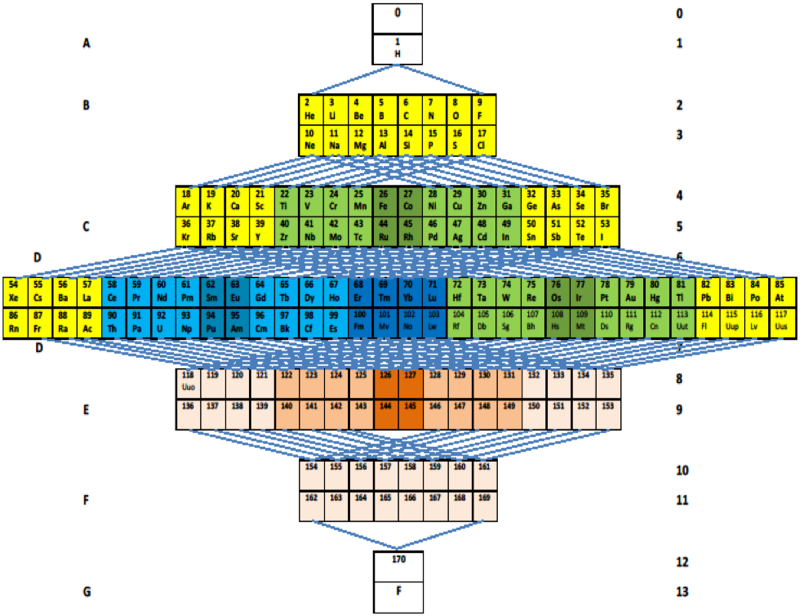
| Year: 2014 | PT id = 653, Type = formulation |
Eadie's Periodic Electron Configuration
By Gerald Eadie, a Periodic Electronic Configuration:
| Year: 2014 | PT id = 654, Type = data |
IQS Periodic Tables
By Jordi Cuadros, a set of three pairs of periodic tables in Catalan, English & Spanish pointing out the differences between PT representations of atoms and PT representations of the material substances:
| Year: 2014 | PT id = 655, Type = review 3D |
Rogue Elements: What's Wrong with the Periodic Table
An article in New Scientist by Celeste Biever (news editor at Nature), Image by Martin Reznik
Weights gone awry, elements changing position, the ructions of relativity – chemistry's iconic chart is far from stable, and no one knows where it will end
IF IMITATION is the sincerest form of flattery, the periodic table has many true admirers. Typefaces, types of meat and even the Muppets have been ordered in its image. For chemists, knowing an element's position in the periodic table, and the company it keeps, is still the most reliable indicator of its properties – and a precious guide in the search for new substances. "It rivals Darwin's Origin of Species in terms of the impact of bringing order out of chaos," says Peter Edwards of the University of Oxford.
The origins of the periodic table lie in the 19th century, when chemists noticed that patterns began to emerge among the known chemical elements when they... click here to continue:
| Year: 2014 | PT id = 661, Type = formulation spiral |
Chandra's Polar Plot Periodic Table
MONOGRAPH ON ATOMS, BY Dr. N. Naveen Chandra, 543 Bellamy Road North Scarborough, On, M1H1G5, 416 439 6630, chandraalex@hotmail.com >© N.Naveen Chandra, 2014.
Abstract
A new way of graphical representation of atoms is developed and presented here. Atoms are recognized as functions of two variables A(r,Θ), where r =2,10,18,36,54,86,118 (given arbitrarily r=1,2,3,4,5,6,7) represents period and Θ representing group, is actually the angle between the groups. A mathematical solution is obtained for Θ having three distinct values of (π /9) radians, (π/18) radians and (π/27) radians which define three super groups satisfying the equation 15(π/27) +10(π/18) +8 (π /9) =2π. 15 groups of two Atoms with a transition zone of (π/27) radians is nominally called Grey Super Group (GSG). 10 groups of which 9 have four Atoms and 1 has two Atoms, also including a transition zone of (π/18) radians, is nominally called Blue Super Group (BSG). 8 groups of which 7 have 6 Atoms and one has 7 Atoms, including a transition zone of (π/9) radians is called Yellow Super Group (YSG). The group with 7 atoms is the so called reference group of Atoms 2, 10, 18,36,54,86 and 118. The GSG has 30 Atoms, the BSG has 38 Atoms and the YSG has 49 Atoms. The Atom 1 is at the centre of the Hub and does not belong to any group or period and has coordinates of (0, 0). Atom 1 having no neutrons is unique.
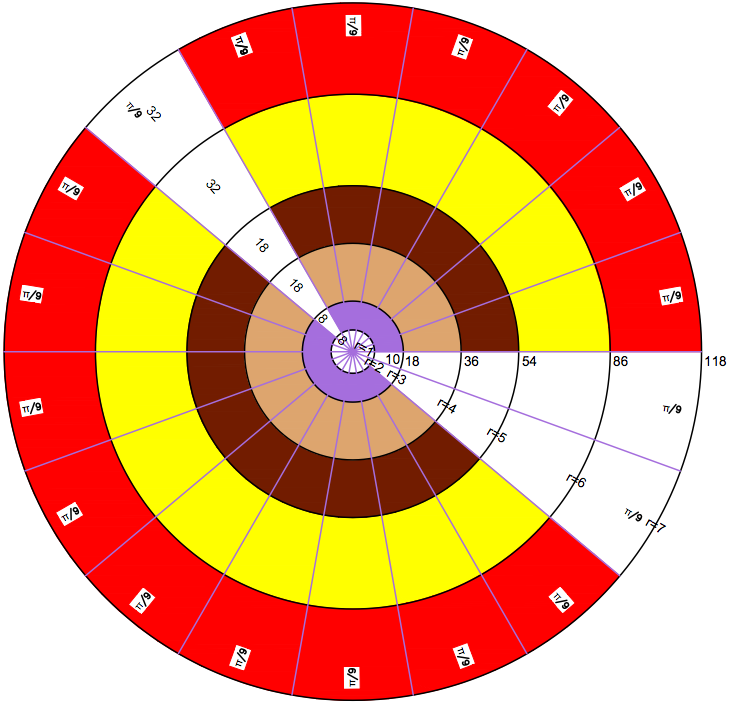


| Year: 2014 | PT id = 662, Type = formulation spiral |
Metallic Character Table
"I would like to submit you an hexagonal periodic table. It's structured in different rings. The elements are ordered on their metallic characters so in the inner rings there are noble gases and nonmetals while in the outer rings there are alkali and alkaline earth metals. I based the order on the typical metallic characteristics: low ionization energy, electron affinity, etc... "
Marco Piazzalunga <marco.piazzalunga@live.com>

| Year: 2014 | PT id = 664, Type = formulation |
Janet Rajeuni
By Philip Stewart:
Janet Rejuvenated, with acknowledgement to Mazurs and to Valery Tsimmerman for the idea of using one square per orbital and of shifting the blocks so that each row represents one value of n, the principal quantum number.
The main objection people make to Janet is that He is placed at the head of the alkaline earth metals although it behaves as a noble gas. The essential answer is that electronic structure explains behaviour and not vice versa; like Ne (and unlike Ar, Kr, Xe and Rn), He has a complete shell. Similarly H, like C, is half way between a full and an empty shell, unlike the alkali metals and the halogens. I suggest a new argument: nobody finds it strange that the p block has a row of non-metals at its head (and that half its members are non-metals), so why not the s block?

| Year: 2014 | PT id = 665, Type = non-chem |
Childhood, Periodic Table of
Sold by Etsy, a Periodic Table of Childhood:
Thanks to Eric Scerri for the tip!
See the website EricScerri.com and Eric's Twitter Feed
| Year: 2014 | PT id = 666, Type = non-chem |
Olympic Lifts, Periodic Table of
By wiseguyremotetraining.com and posted on Pinterest, a Periodic Table of Olympic Lifts:
Thanks to Eric Scerri for the tip!
See the website EricScerri.com and Eric's Twitter Feed
| Year: 2014 | PT id = 667, Type = non-chem |
Stuff Stoners Like Periodic Table
From the Stuff Stoners Like website:
| Year: 2014 | PT id = 669, Type = non-chem |
Press Release Story Elements
From HustonPR:
If your presentation dosen't contain one or more of these story elements, the story does not exist:
Thanks to Marcus Lynch for the tip!
| Year: 2014 | PT id = 670, Type = formulation spiral 3D |
UVS Periodic Tables
From the Universal Vortical Singularity (UVS) website, two related formunations from the nucleosynthesis in the universe section, one showing a "manifold dual-core 3-sphere hypersphere topology", and the other showing a "dual-core Möbius strip topology":
| Year: 2014 | PT id = 671, Type = formulation spiral misc |
Clock Periodic Table
Prof. Martyn Poliakoff of the University of Nottingham, and star of the Periodic Videos YouTube Channel, explains how he was given a periodic table clock by a Japanese School teacher... which he likes very much:
Thanks to Eric Scerri for the tip!
See the website EricScerri.com and Eric's Twitter Feed
| Year: 2014 | PT id = 675, Type = non-chem |
Musical Notation, Periodic Table of
From the Tone Deaf Store, a Periodic Table of Musical Notation:



Thanks to Eric Scerri for the tip!
See the website EricScerri.com and Eric's Twitter Feed
| Year: 2014 | PT id = 676, Type = non-chem |
Phobias, Fears & Unspeakable Horrors, Periodic Table of
From ShirtWOOT, a Periodic Table of Phobias, Fears, and Unspeakable Horrors that uses the actual elemental symbols rather well:


Thanks to Eric Scerri for the tip!
See the website EricScerri.com and Eric's Twitter Feed
| Year: 2014 | PT id = 678, Type = data |
Medicinal Chemist's Periodic Table
From In The Pipeline, a blog posting about a [free, full access] review entitled, Exploration of the medical periodic table: towards new targets.
- Element symbols in white are known to be essential in man.
- The ones with a blue background are found in the structures of known drugs.
- The orange ones are used in diagnostics.
- The green ones are medically useful radioisotopes.
- The paper notes that titanium and tantalum are coloured blue due to their use in implants.


Thanks to Marcus Lynch for the tip!
| Year: 2014 | PT id = 679, Type = non-chem |
College Scholarships, Periodic Table of
From the website:
"At ScholarshipExperts, we want to make your [American College] scholarship search easy and fun, while helping you find free money to pay for your college education. That's why we created the Periodic Table of College Scholarships – an interactive tool to help you explore thousands of scholarships available online and find opportunities that match your academic achievements, interests, and needs.
"Start experimenting with the table below by selecting an element to view a full list of scholarships available in a specific category. To see full scholarship details and application deadlines, click on the title of an individual award."
| Year: 2014 | PT id = 680, Type = formulation |
Belikov's Modular Periodic Table of Chemical Elements
"I call this version of the Modular Periodic Table of Chemical Elements. I got the idea for it some time between 2005 and 2007, during the chemistry course at my university, in attempt to rationalize the clumsy common version I was being taught. I showed it to my chemistry teacher, but he didn't seem to be impressed much, so it went into the drawer. Recently I decided to resurrect it and publish somewhere. So I had a look on the web and found your excellent database, with hundreds of versions. After the first shock, I realized that only few are actually similar to my version. These are well known Janet's table and ADOMAH table. So, it appeared to me that the idea to group elements strictly according to filling of their atomic shells is not new. However, the way I have done it is slightly different from the mentioned tables. For example, s,p,d and f blocks of elements are completely autonomous and can be placed wherever desired (hence the name 'Modular'). This reflects the notion that there is little in common in chemical behavior between the elements in different blocks. Also, outer subshell type, energy level and electron count are clearly labeled, so that these parameters can be quickly determined for each element.
"Overall, I think that this version of periodic table allows easier understanding and transition from IUPAC table and could be implemented in school and university textbooks."
Aleksey Belikov

| Year: 2014 | PT id = 681, Type = formulation |
Jodogne's Janet New Colour Periodic Table
"This Periodic Table(click here for larger version) incorporates the Real Aufbau of Professor Pyykkö based on relativistic Quantum Mechanics, with Z continuity horizontally and vertically, by means of taking into account the ground level - energy increase upward - of the last incoming electron (the lower side of the element case is the level guide mark). A large yellow line indicates period. A gradual color for H induces a manifold chemical behavior."
J.C.Jodogne
| Year: 2014 | PT id = 682, Type = non-chem |
Learning Methods, Periodic Table of
Nano Ninjas CLASS - FLL Project by Nano Ninjas.
CLASS = Crowdsourced Learning Academic Scholastic System with additional Spin wheel and periodic table of learning methods.
CLASS is a great tool to help students be more comfortable with how they learn in a classroom. Our Periodic Table Of Learning Methods helps people to identify their learning style and corresponding learning methods. Additionally the Spin Wheel we have created displays these learning styles and methods in a easy to understand format. Together our solution improves the learning experience for students in a classroom environment.
Click here for fulll version... be sure to zoom in.
| Year: 2014 | PT id = 683, Type = non-chem |
HTML 5 Periodic Table
Josh Duck's 2010 HTML 5 Periodic Table has been removed from the web (still avialable here), but it has been replaced by an updated HTML5 Periodic Table, by Robert Manning:
| Year: 2014 | PT id = 697, Type = formulation |
Aco Muradjan's New Notation Scheme
Aco writes:
On 08.11.2014 I added an article to the General Science Journal:
"Necessity of urgent revising and changing the present IUPAC notation scheme in the Periodic Table"
The current and present modern notation scheme for the groups in the Periodic Table exist from 1985, proposed from the IUPAC Commission on the Nomenclature of Inorganic Chemistry, as recommendation. This proposal was also verified in 2005.
Because the IUPAC Commission encourages further discussions, improvements and proposals on this subject I made this new article which article investigates the possibilities for the new notation scheme in the Periodic Table. Links:
This article has picture of the Periodic Table with new notation scheme:
| Year: 2014 | PT id = 705, Type = formulation 3d helix |
Arrangement of Elements 7th Order & Element Sequences
An exploration of some mathematics underlying the periodic table, read the PDF here, by Olivier Joseph.
Oliver says:
"May I propose you the following pattern, as the result of a personal study concerning the arrangement of the Elements, including sequences. Based on some hypothesis and as depicted in the enclosed illustrations, the elements are positioned according to a spiral function of atomic number and atomic mass, representation in 2D in a spiral form pattern, or in 3D conical helix model.
"The elements are numbered and placed consecutively along this spiral according to a specific angle, appropriately established between each element, forming a seven arm spiral pattern. With such an angle, specifically defined, a link is established between the various elements of a same group (corresponding to chemical elements with similar properties) and different layers. These latter becoming distributed among each arm of the spiral in a notable arranged way."
| Year: 2014 | PT id = 723, Type = formulation data |
Schaeffer's IUPAC Periodic Table Quantum Mechanics Consistent
IUPAC Periodic Table Quantum Mechanics Consistent, Bernard Schaeffer, Journal of Modern Physics, Vol. 5, No. 3, February 24, 2014
DOI: 10.4236/jmp.2014.53020
Abstract: Most periodic tables of the chemical elements are between 96% and 100% in accord with quantum mechanics. Three elements only do not fit correctly into the official tables, in disagreement with the spherical harmonics and the Pauli exclusion principle. Helium, belonging to the s-block, should be placed beside hydrogen in the s-block instead of the p-block. Lutetium and lawrencium belonging to the d-block of the transition metals should not be in the f-block of the lanthanides or the actinoids. With these slight modifications, the IUPAC table becomes quantum mechanics consistent.
| Year: 2014 | PT id = 728, Type = data |
URENCO Periodic Table
A periodic table by URENCO showing which non-radioactive (stable) elements are suitable for isotopic enrichment using gas centrifuge technology:
 |
 |
 |
| What is the Periodic Table Showing? | Periodicity |
© Mark R. Leach Ph.D. 1999 –
Queries, Suggestions, Bugs, Errors, Typos...
If you have any:
Queries
Comments
Suggestions
Suggestions for links
Bug, typo or grammatical error reports about this page,please contact Mark R. Leach, the author, using mark@meta-synthesis.com
This free, open access web book is an ongoing project and your input is appreciated.




